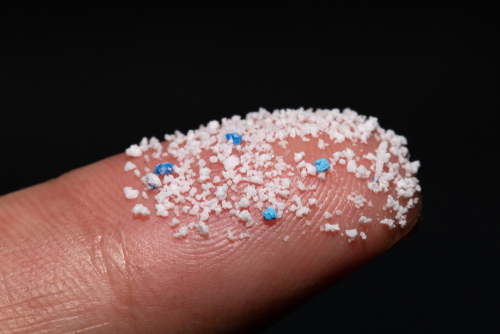Microplastics
Microplastics have been discovered in the most unexpected places, but most notably in our oceans, resulting in tiny fragments of plastic inside fish and consequently inside ourselves. Now scientists in Japan have even found microplastics in rain clouds, falling down on us, polluting the air, the ground, our water and crops. It seems that nowhere can escape plastic pollution.

The scientists discovered nine types of plastic as well as one type of rubber in samples they examined from the mist around Mount Fuji and Mount Oyama.
“If the issue of ‘plastic air pollution’ is not addressed proactively, climate change and ecological risks may become a reality, causing irreversible and serious environmental damage in the future,” explained Hiroshi Okochi, lead author of the research.
While the contamination created from the presence of microplastics in rain clouds falling on to the ground might seem obvious, there are also other worrying effects that could contribute to global warming. Airborne microplastics degrade quicker in the upper atmosphere than they do on the ground because of the stronger ultraviolet radiation. But the result of degradation is the release of harmful greenhouse gases.
Another study recently discovered that exposure to microplastics created dementia and behavioral changes in mice, most notably in older mice. The study showed that microplastics found their way to every organ in the mouse’s body including their brain. “The brain-blood barrier is supposed to be very difficult to permeate. It is a protective mechanism against viruses and bacteria, yet these particles were able to get in there,” explained study leader Jamie Ross. “It was actually deep in the brain tissue.” So far it’s not been demonstrated in humans, but there seems no reason not to suspect the similar results in every animal.

Fortunately there might be a glimmer of hope. In 2001 a team of scientists discovered a bacteria called Ideonella Sakaiensis that successfully breaks down the carbon in plastics. Since then the team has discovered other similar organisms as well as successfully manipulating bacteria to produce enzymes that break down plastic at a rate which might be fast enough to be able to combat the massive global problem. Despite a lack of funding, scientists constantly search landfill sites hoping to discover a better performing bacteria, a problem made even harder due to the different types of plastics we use and dispose.
In a similar study, another group of scientists discovered high levels of plastic degrading enzymes in deeper depths of the ocean, 60% of which had never been discovered before. “The next step would be to test the most promising enzyme candidates in the lab to closely investigate their properties and the rate of plastic degradation they can achieve,” Aleksej Zelezniak, associate professor of biology at Chalmers University of Technology, explained. “From there you could engineer microbial communities with targeted degrading functions for specific polymer types.”
As microplastics infiltrate every part of the planet, at least there might potentially be a way to contain the problem for the future.



